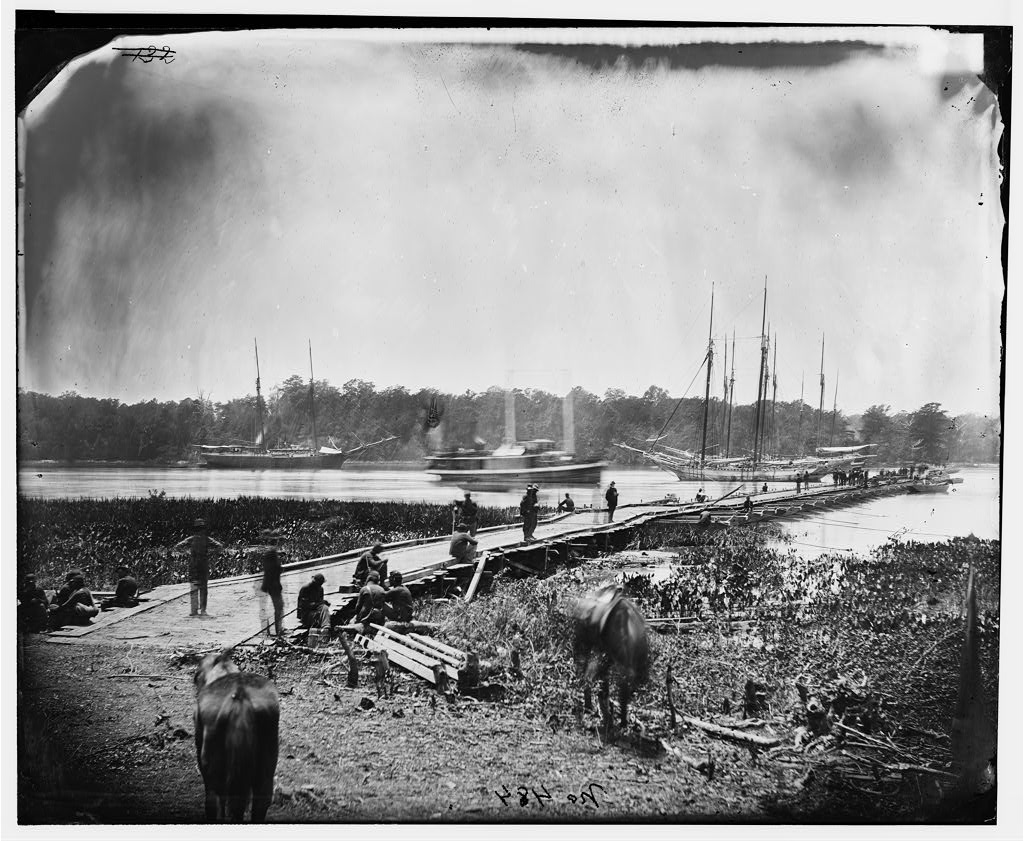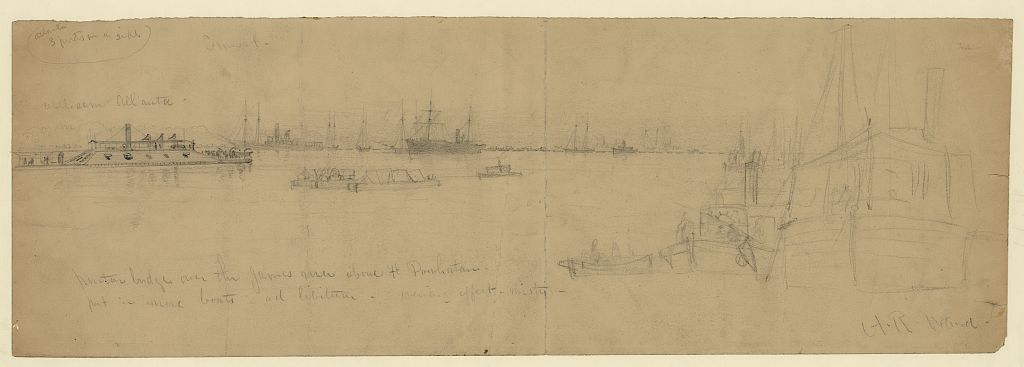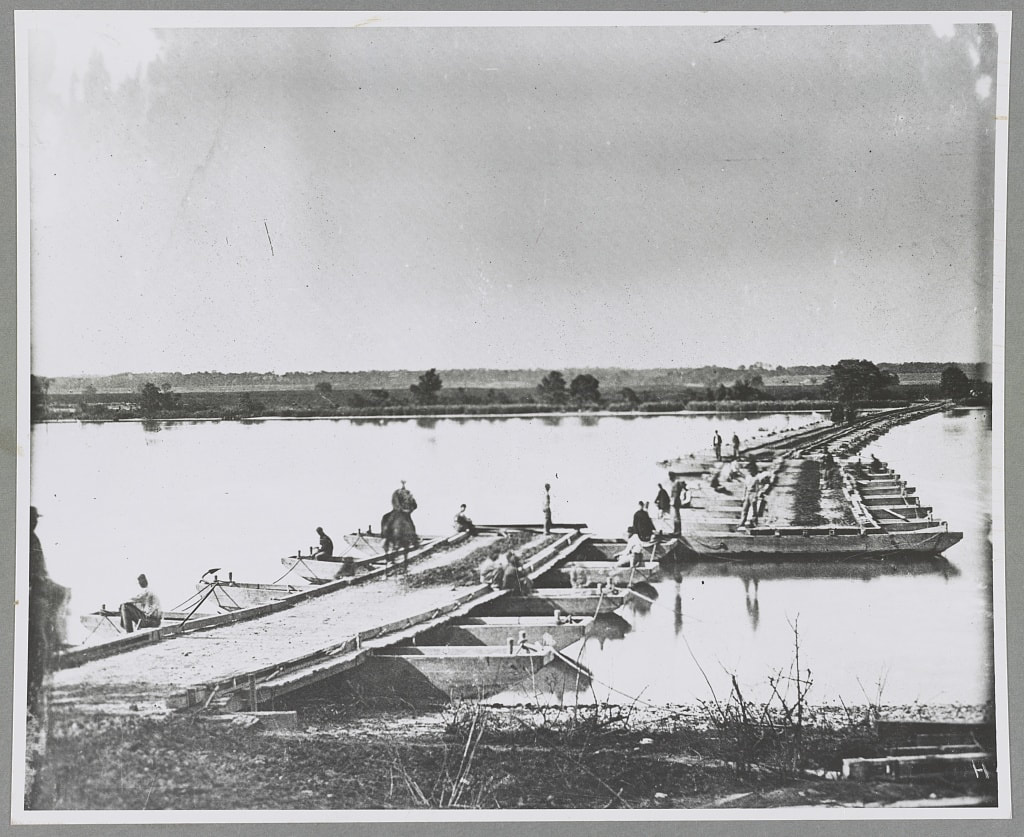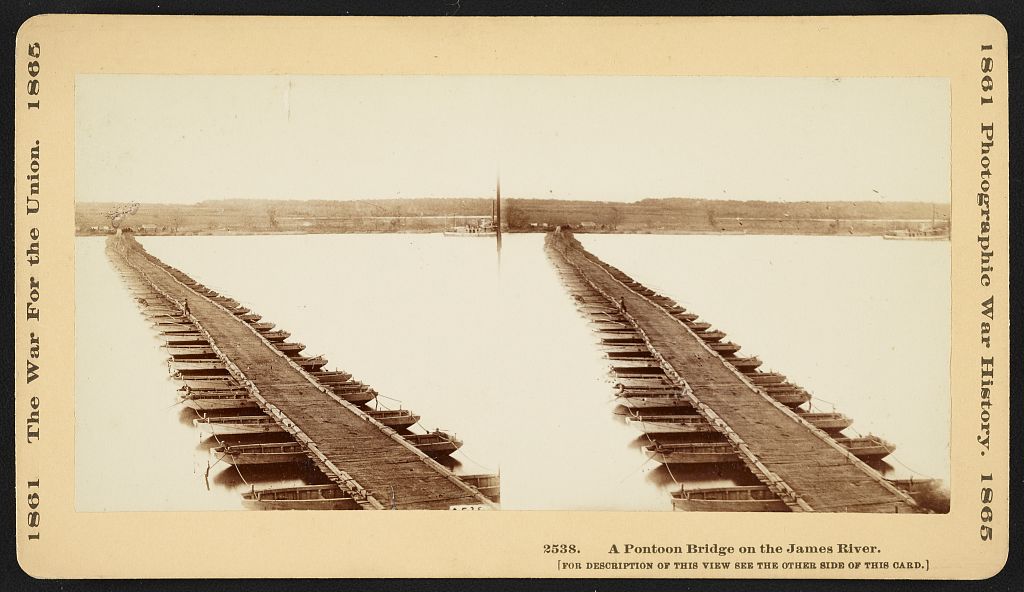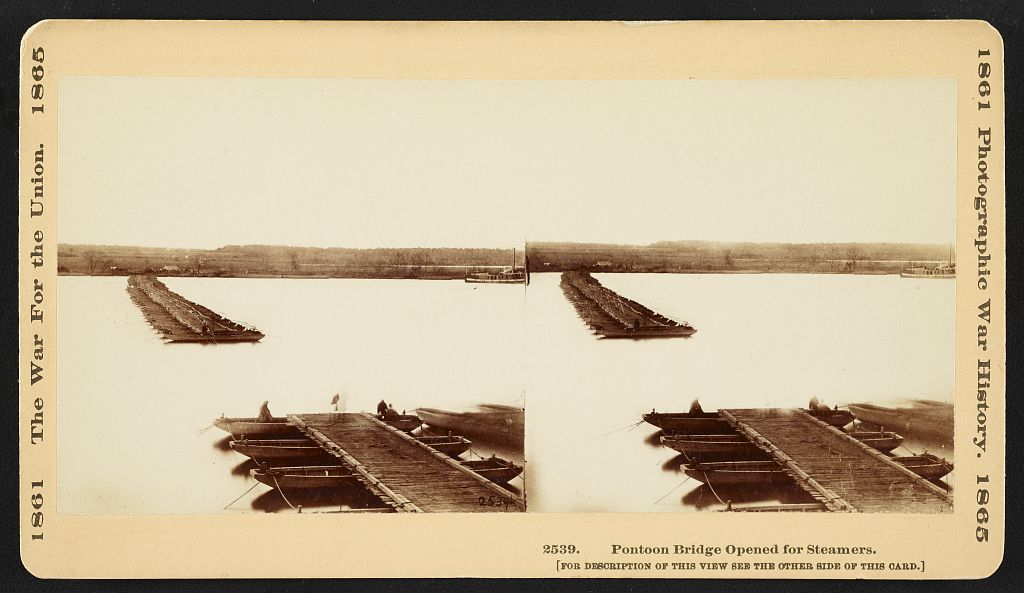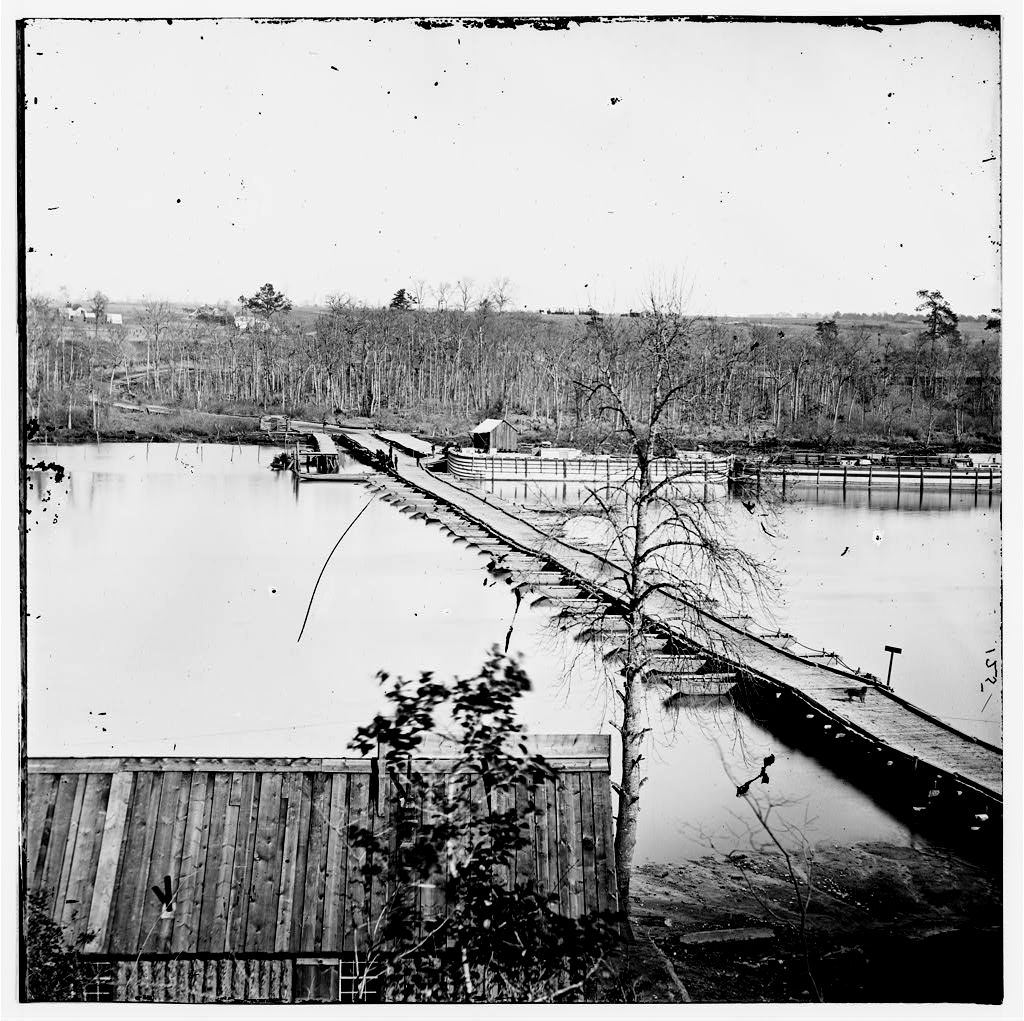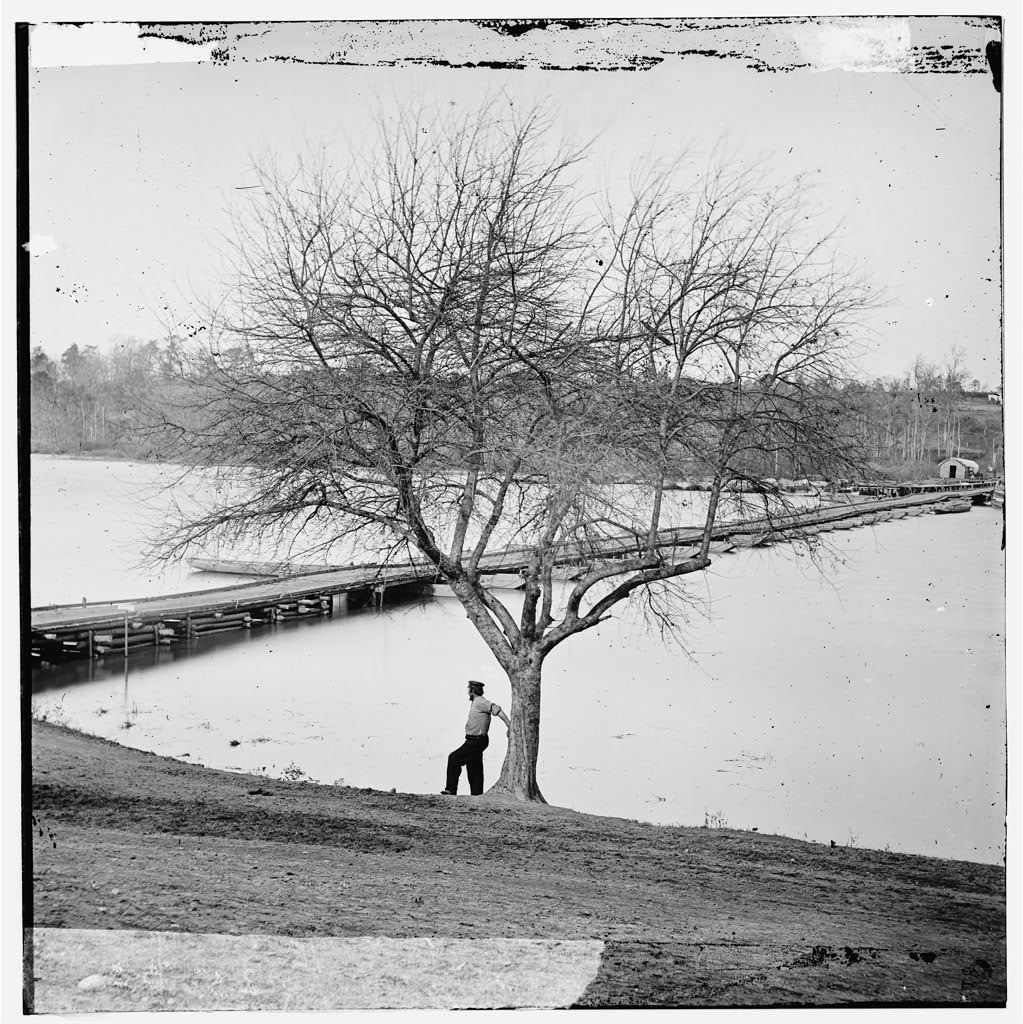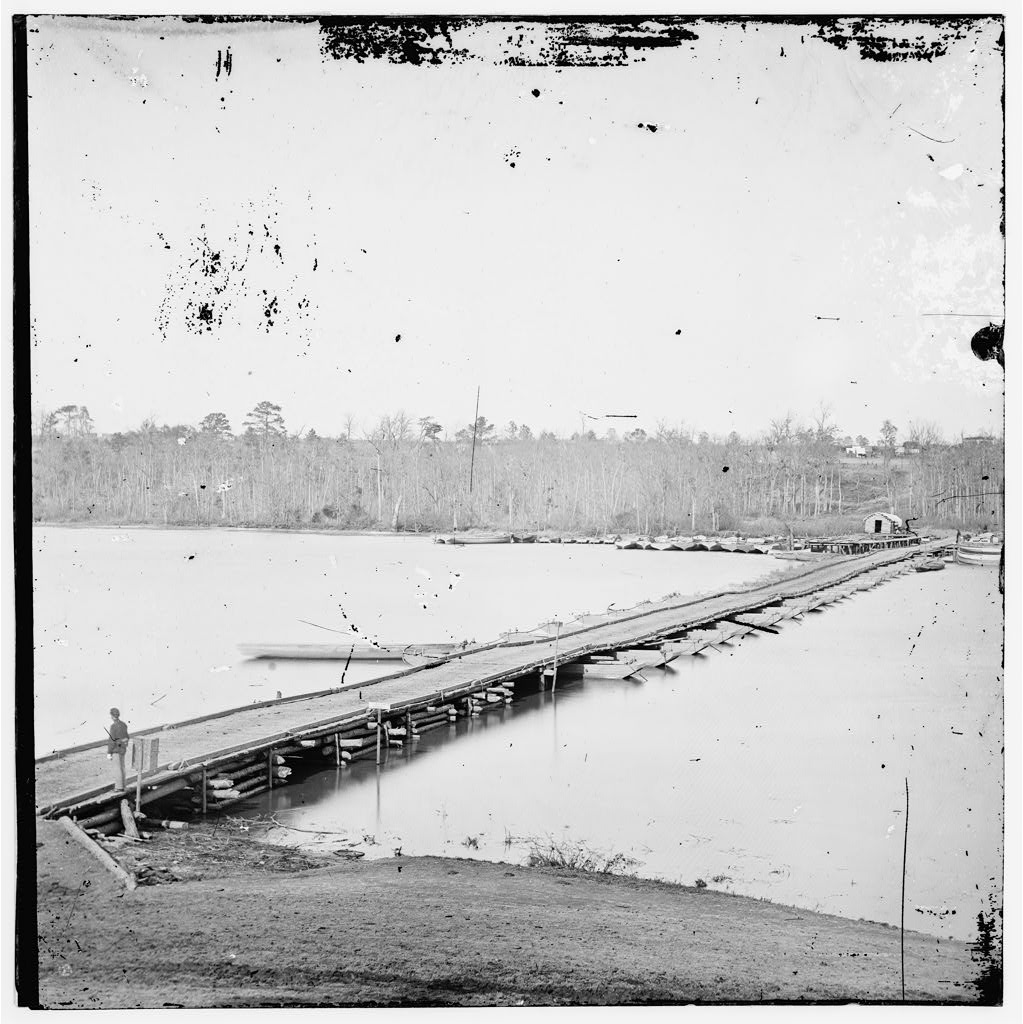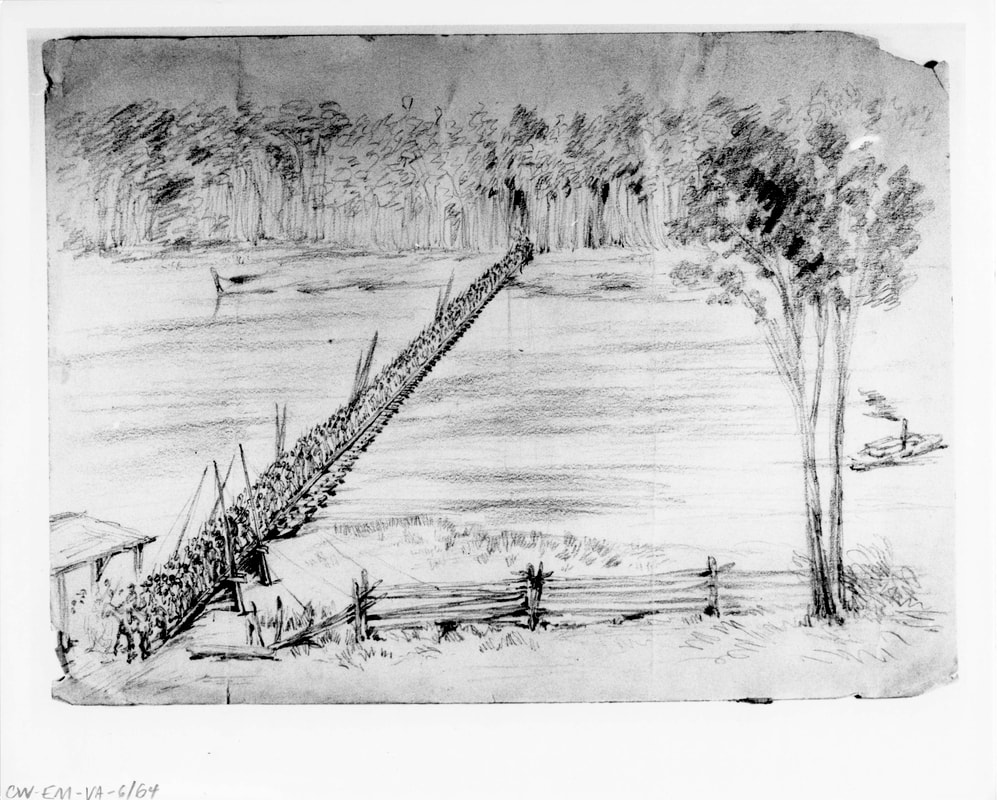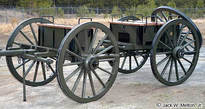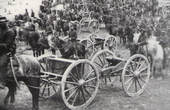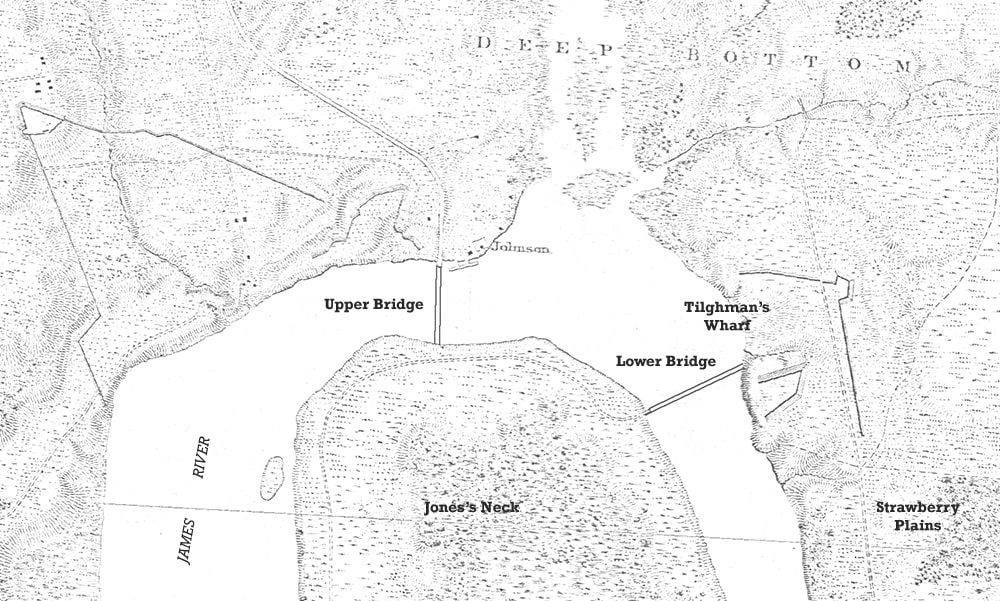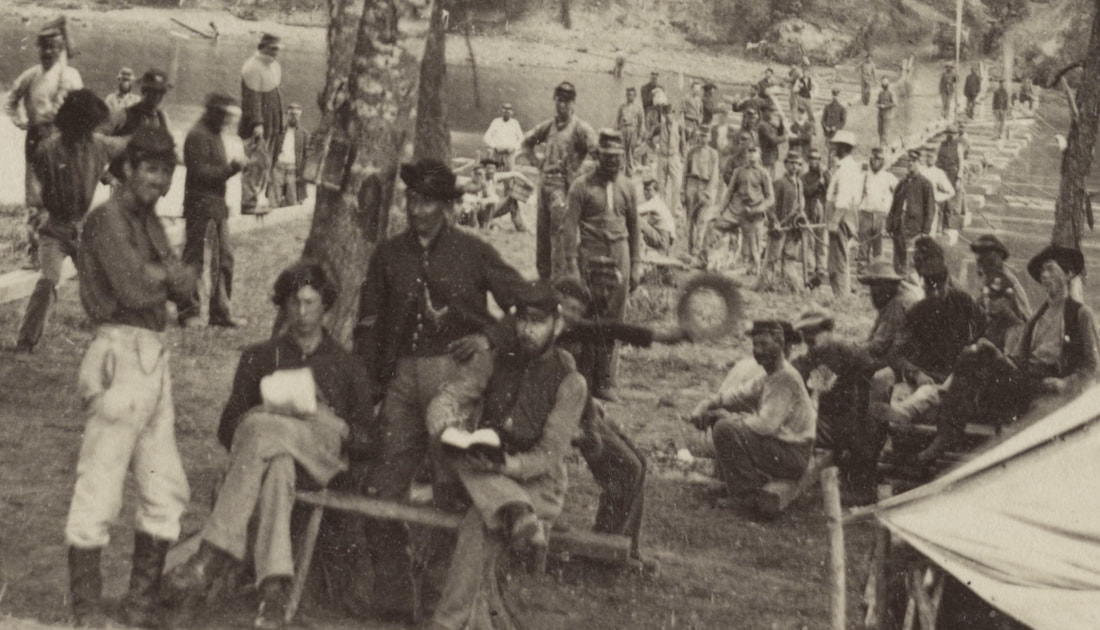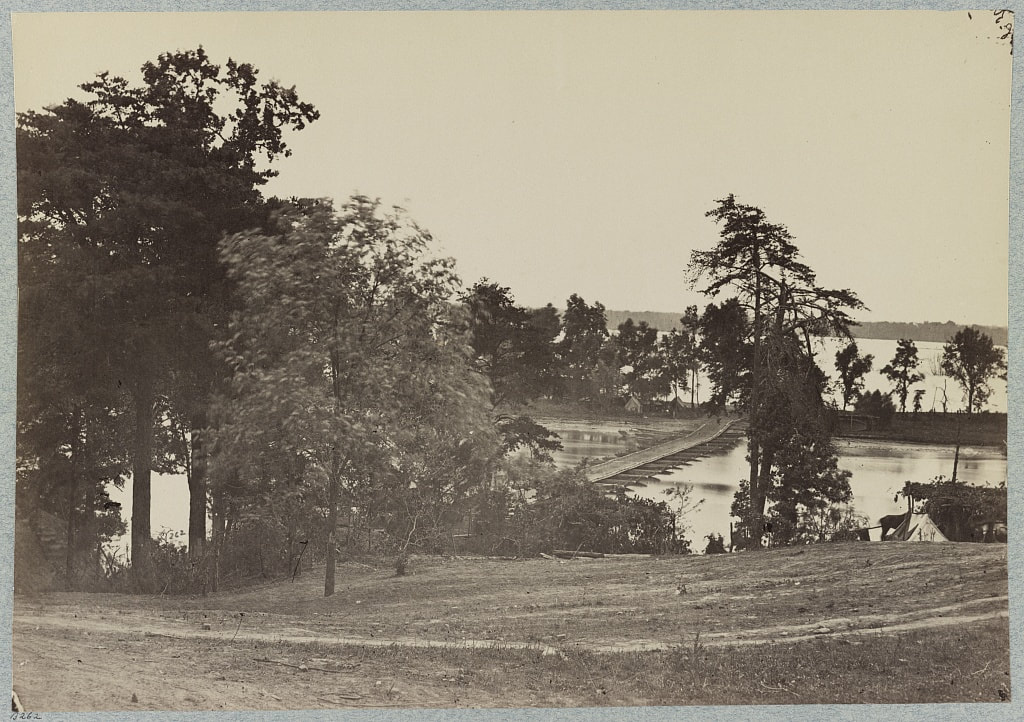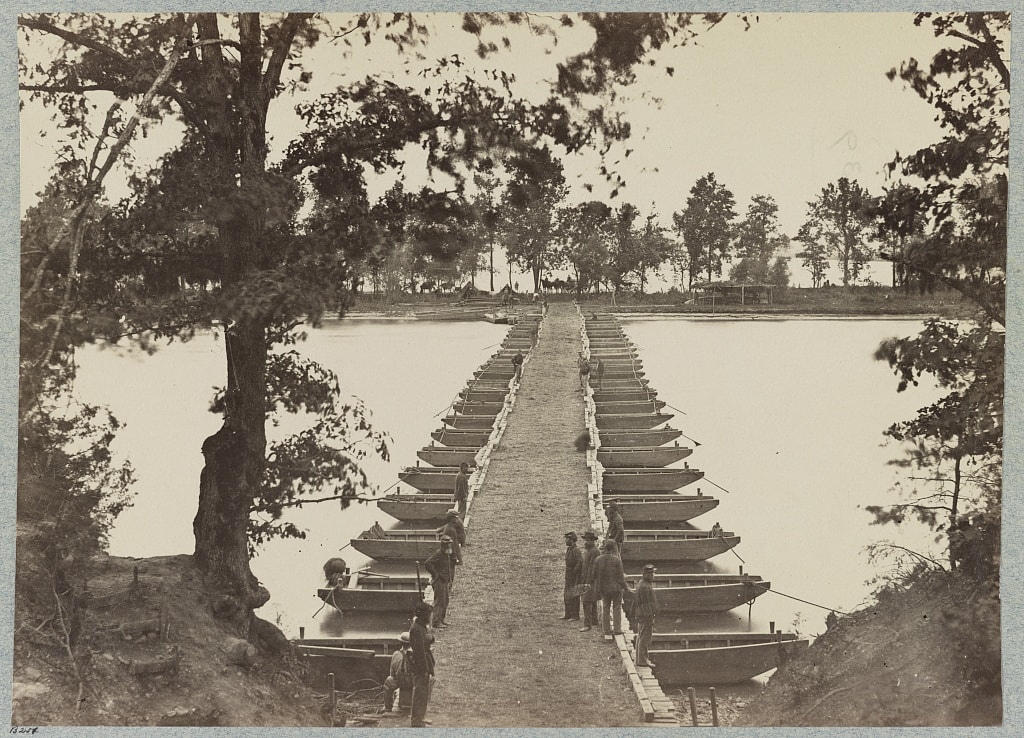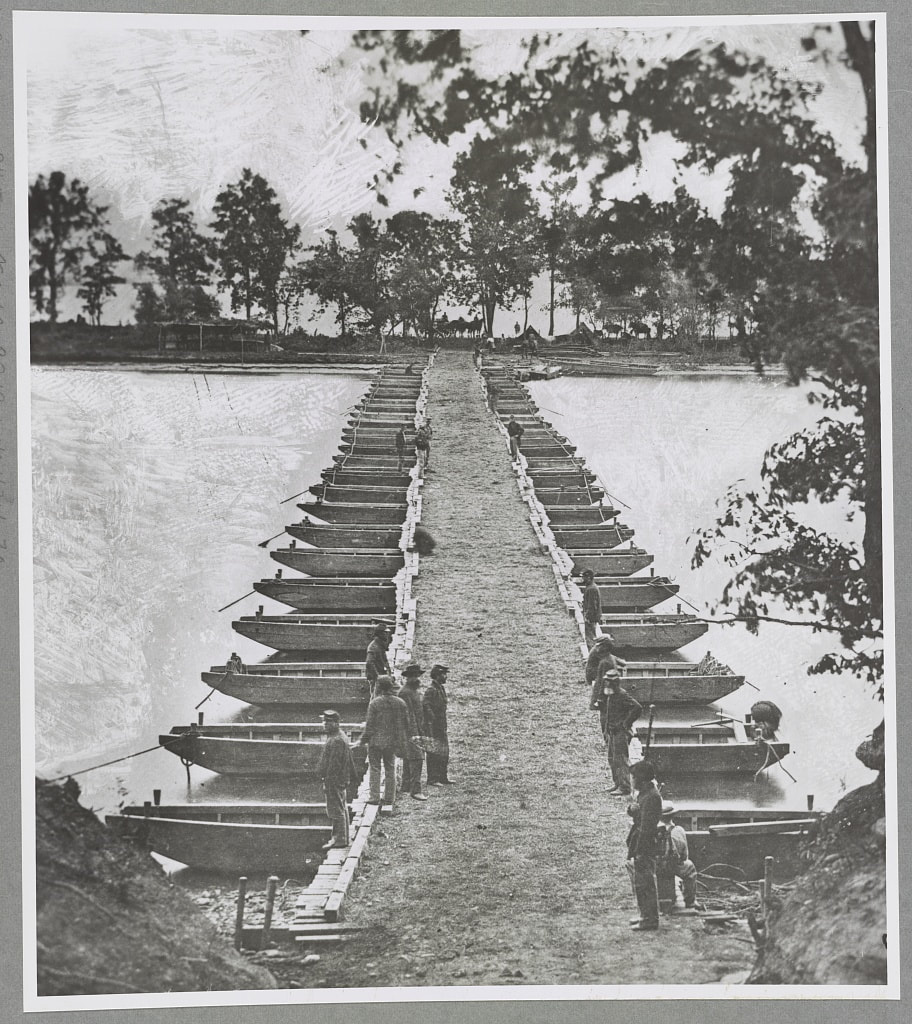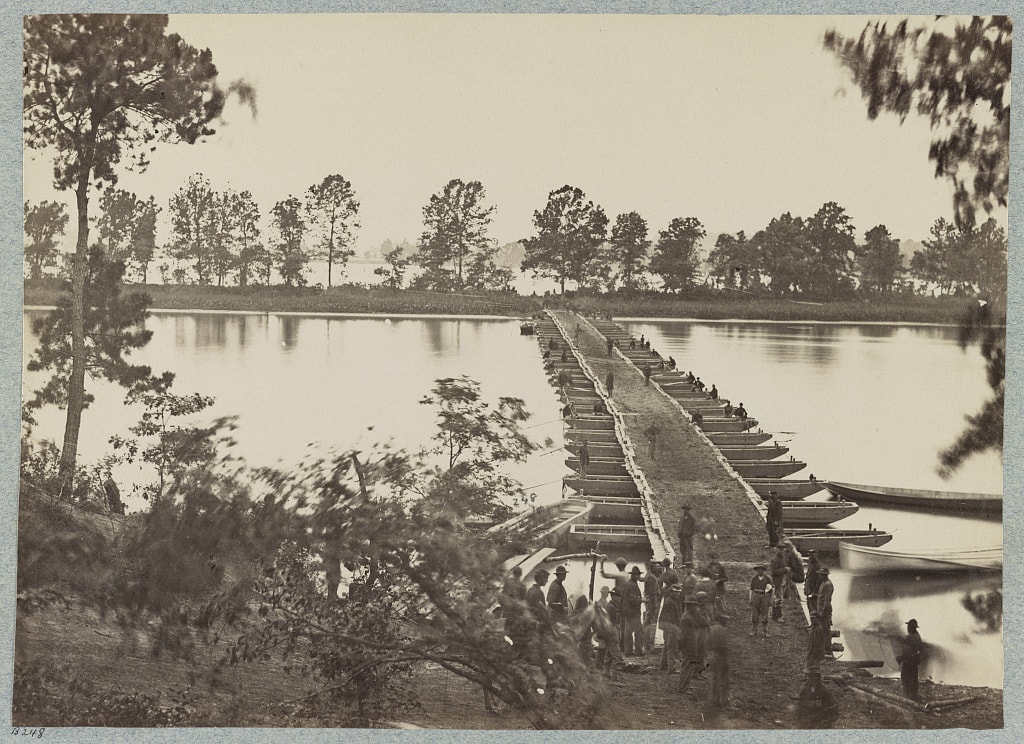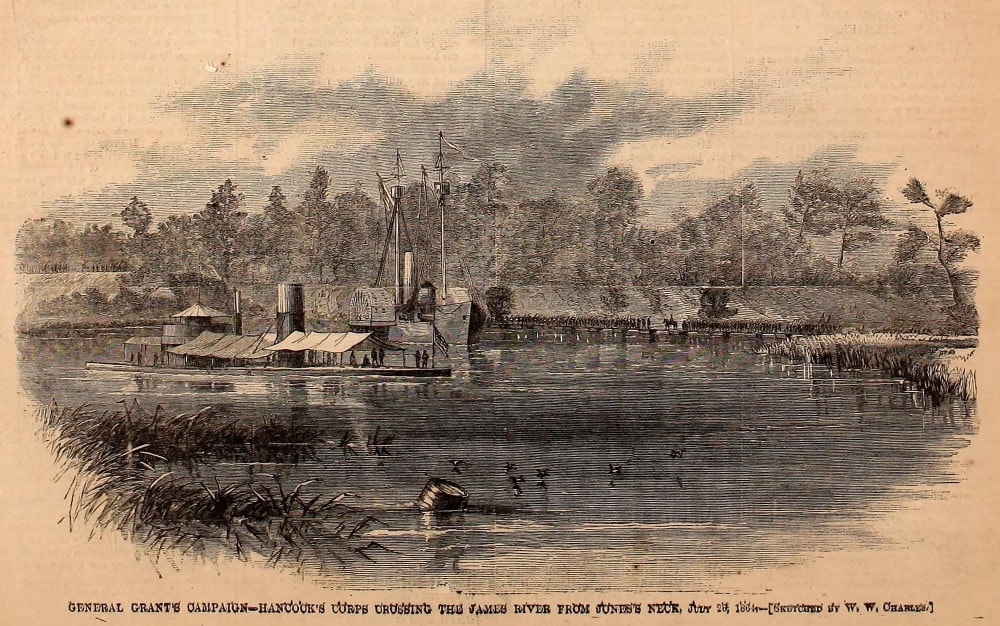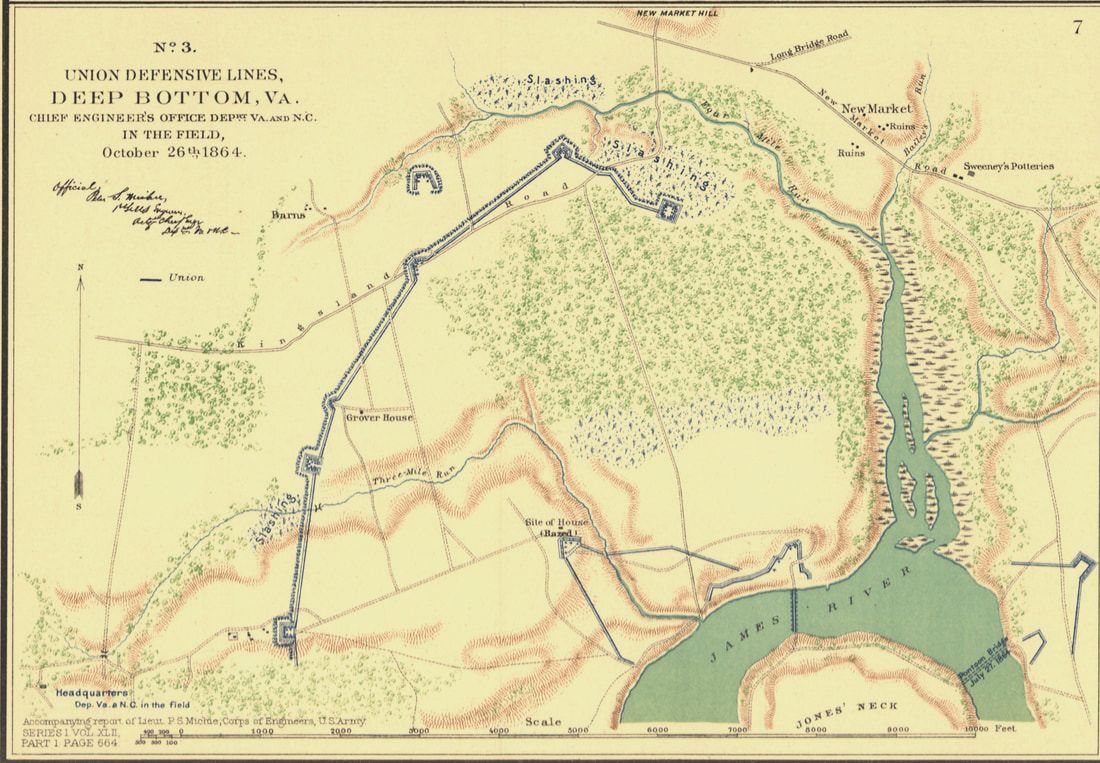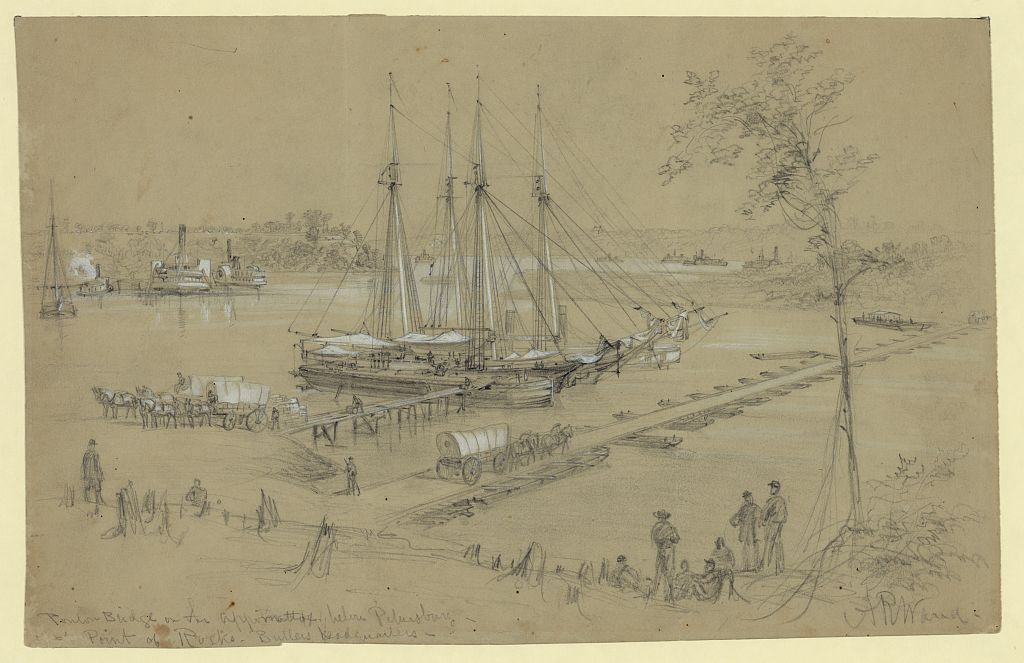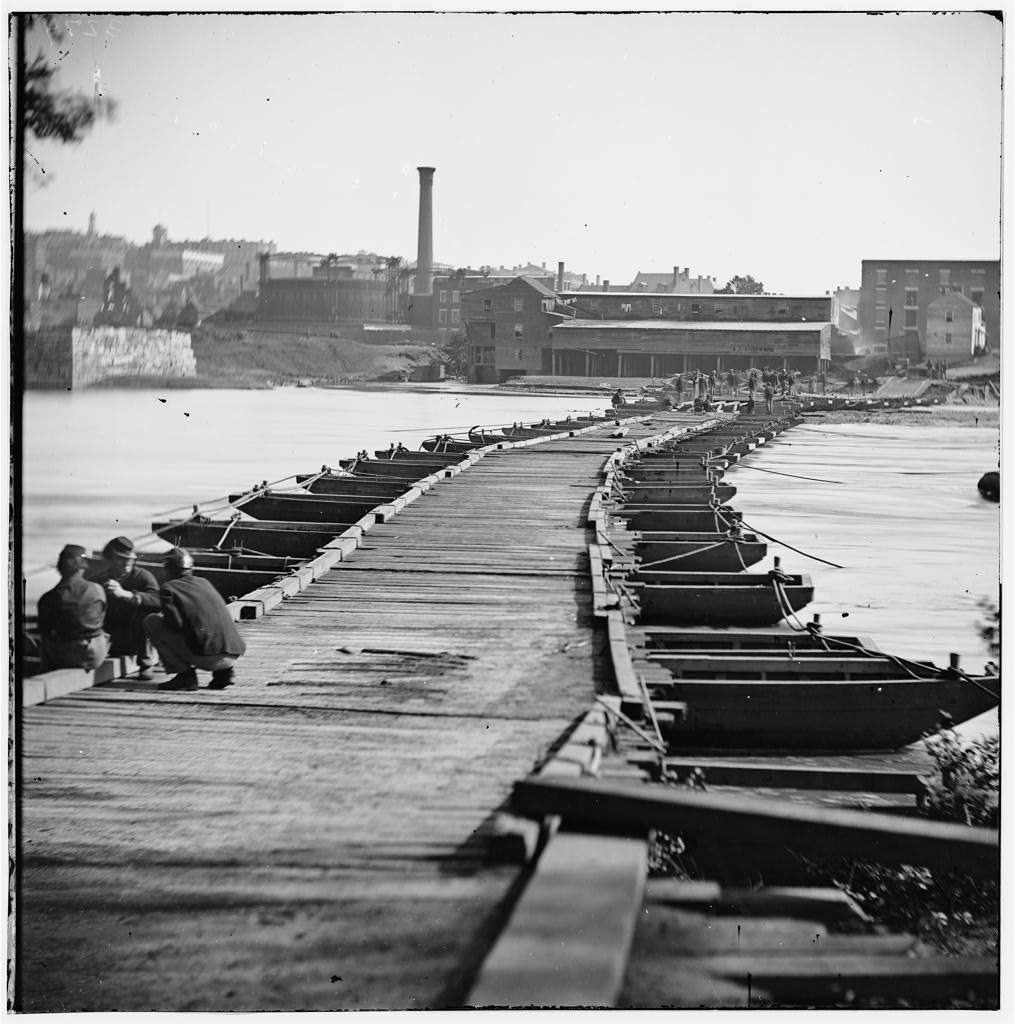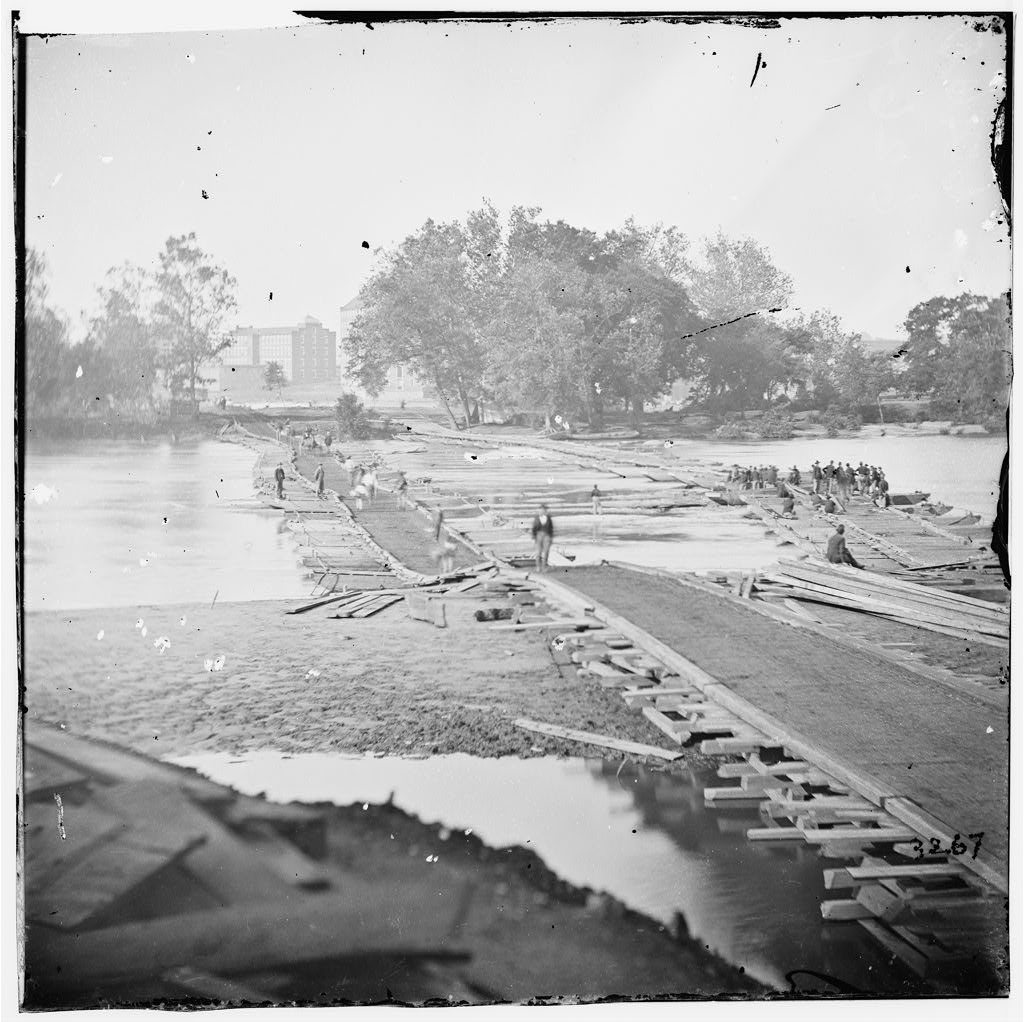Pontoon Bridges in the Petersburg Campaign
A Pontoon bridge on the James River
The boats and timbers forming this bridge are carried on wheels. When the army needs a bridge the boats are quickly launched, and anchored parallel [perpendicular?] with the current, the timbers are soon laid. A bridge is thus formed, strong enough to permit the army to cross with the cannons and trains. The boats are then taken up, placed on the wheels and are carried with the army.
The boats and timbers forming this bridge are carried on wheels. When the army needs a bridge the boats are quickly launched, and anchored parallel [perpendicular?] with the current, the timbers are soon laid. A bridge is thus formed, strong enough to permit the army to cross with the cannons and trains. The boats are then taken up, placed on the wheels and are carried with the army.
|
Not cavalry crossing. The end of a battery on the left with (perhaps) a forge wagon and two caissons. A mounted officer leading the column of infantry, middle of the bridge. The regimental flags may be seen at the center of the following column. Is the steamboat upstream or downstream from the bridge. Are there clues? Might that be Point of Rocks on the left?
|

It is not unusual to have a faulty caption on these images. There is no mistaking the artillery caissons. The infantry regiment has its flags at the center of the column, perhaps unfurled for the river crossing occasion. You can see the company breaks in the column. Next question. Where was this pontoon bridge? Not the James River bridge. Deep Bottom? Broadway Landing?
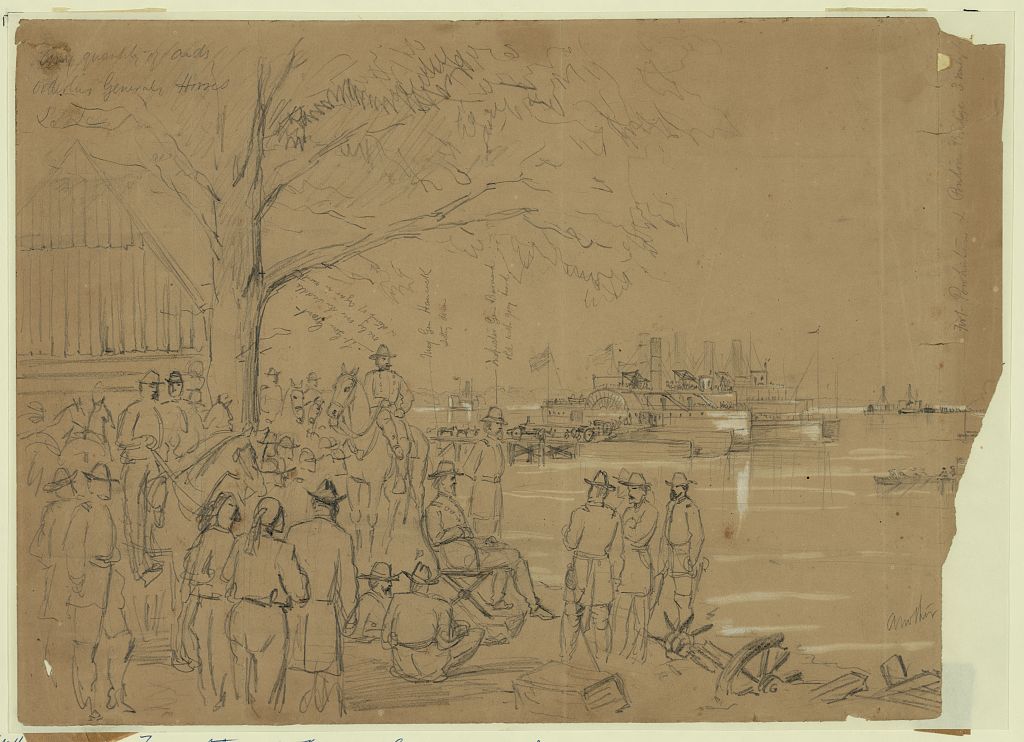
LC 21747. Gen Grant, Hancock & Staff watching the transportation of the Second Corps from Wilcox Landing to Windmill Point across the James River. William Waud, June 14, 1864. Inscribed upper left: Any quantity of aids[sic], orderlies Generals Horses &c. &c.
Inscribed lower right: another [image cropped]
Inscribed within image, vertically, with arrow indicators: Lt Gen Grant one leg over the saddle & stump of cigar in mouth; Maj Gen Hancock sitting down; Inspector Gen Barnard old with grey beard; Fort Powhatan & Pontoon bridge 3 miles to.
Published in: Harper's Weekly, July 9, 1864, p. 436.
Pontoon Bridges at Deep Bottom
July 26-27, First Deep Bottom: "General Hancock and General Sheridan marched in the afternoon of [July} 26th, and about two o'clock in the morning of the 27th, the Second Corps, followed by the cavalry, began crossing the James. There were two ponton bridges at Deep Bottom (the north end of Jones's Neck is so called), one just above the mouth of Bailey's Creek, the other just below it; the creek is about twelve miles from Richmond; it is four or five miles long, running from north to south, crossing the Central or Darby road (at Fussell's mill), the Long Bridge road, and the New Market or river-road. It was impassable near its mouth, and probably from its character there gave rise the the name of Deep Bottom. General Foster of the Tenth Corps held the two ponton Bridges. There was considerable force of the enemy intrenched opposite the upper bridge, but their line appeared to extend only a short distance beyond. General Hancock determined to cross by the lower bridge, and turn the enemy's left flank, while General Foster threatened them in front. The Second Corps and cavalry were over the river before daybreak, and as soon as it was light, moved forward, the cavalry on the right." --A. A. Humphreys, Virginia Campaign of '64 and '65, pg. 248.
Overview map showing general area, highlighting importance of connecting the AoP and AoJ with pontoon bridges across Appomattox River at Point of Rocks and Broadway Landing. Later expanding from Jones Neck to Deep Bottom and Strawberry Plains to create an offensive bridgehead north of James River.....
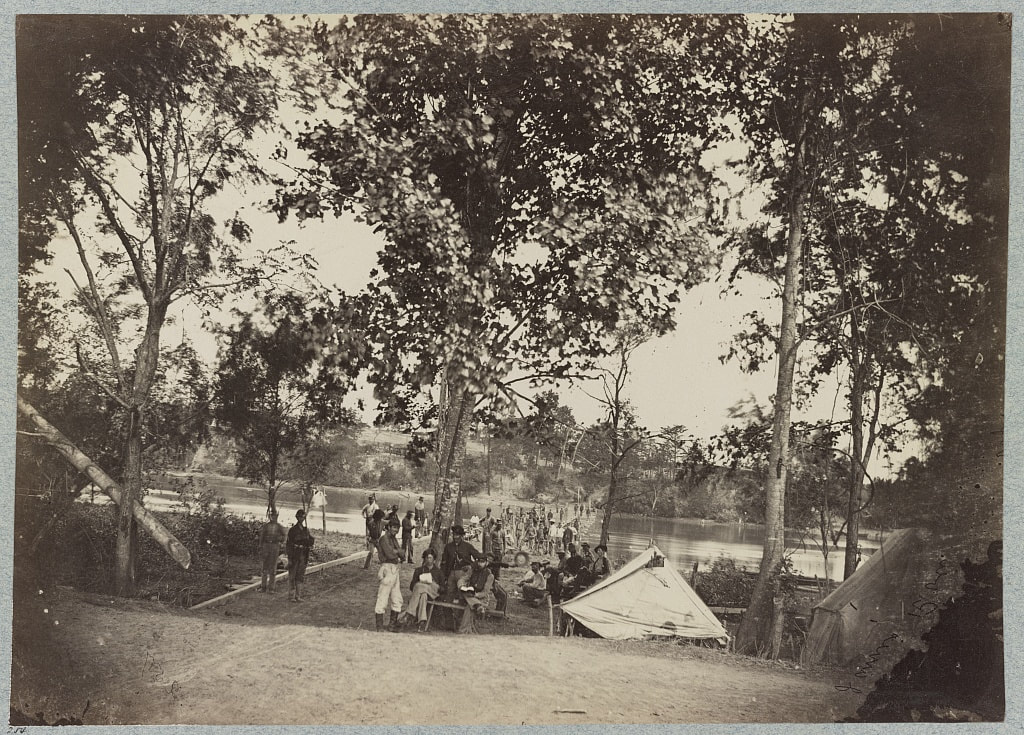
LC 33355. "Pontoon bridge at Deep Bottom, James River, Va.," unattributed photograph, likely Russell. Taken from the right bank, view from Jones Neck to Strawberry Plains. This is suggested to be the Upper Bridge at Deep Bottom, but details link it to the series of photos below. Assembled in August 1864.

LC 21701. Jones Neck from Gen R.S. Fosters Head Quarters at Deep Bottom. William Waud, June-July, 1864.
Inscribed on verso with title: between 3 & 4 miles from Malvern Hills and on the same side of the James River showing the Pontoon bridge & the double end gun boats protecting one of his flanks. Gen Foster has an entrenched position here which is likely to become the base of operations for movements of importance. When the object of this position is more fully developed I will send other sketches of it. W.W.
Published in: Harper's Weekly, July 23, 1864, p. 468.
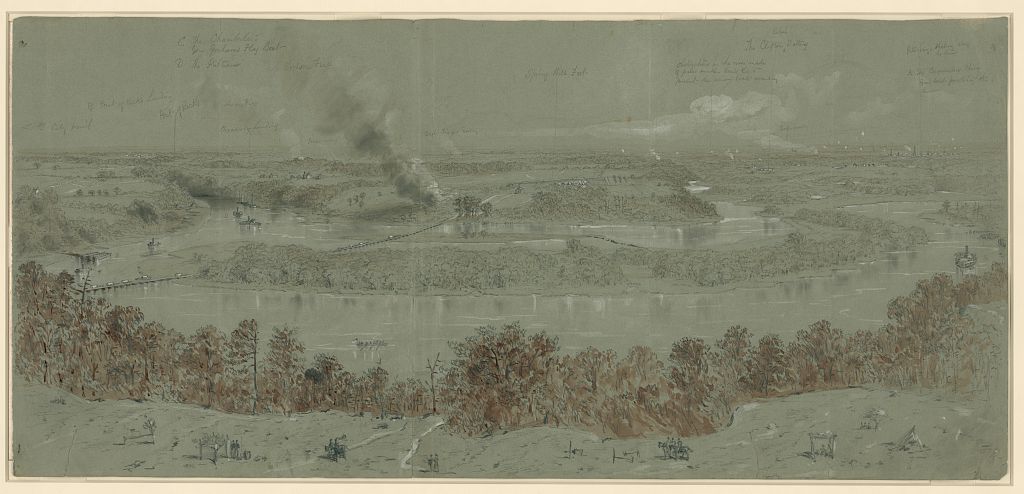
LC 22507. View from Weitzels lookout & sig[nal] tower; Bermuda hundred looking south. William Waud, 1864. Inscribed after title: shewing [sic] the Pontoon Bridge, Spring Hill Fort, the course of the Appomattox River & position of Gun Boats, Fort Clifton (rebel), Petersburg in the distance being shelled from out lines.
Inscribed above image from left to right: City Point; B- Point of Rocks landing; Point of Rocks; C The Chamberlain. Gen Graham's Flag Boat; D The Putnam; Woods on Fire; Broadway Landing; Woods on Fire; Troops moving; Dust - Troops moving; Spring Hill Fort; obstructions in the river made of piles of sunken boats &c to prevent the union boats ascending; The Clifton Rebel Battery; Troops moving; Petersburg, shelling along the lines; A - The Commodore Perry Gun Boat picketing the river.
Published in: Harper's Weekly, July 23, 1864, pp. 472-473.
An Often Misidentified Photograph (Even Here!)
It was pointed out by astute observer Aaron Rowland that the photograph on the left from the Library of Congress (LC 02736), labelled "Petersburg, Virginia. Pontoon bridge," is likely an image of a pontoon bridge over James River looking from Manchester towards Richmond. The image on the right (LC 02724) is labelled "Richmond, Va. Pontoon bridges across the James, looking toward Manchester." The right-hand bridge in this photo appears to be the same as that in the photograph on the left, the same bridge viewed from opposite banks.

